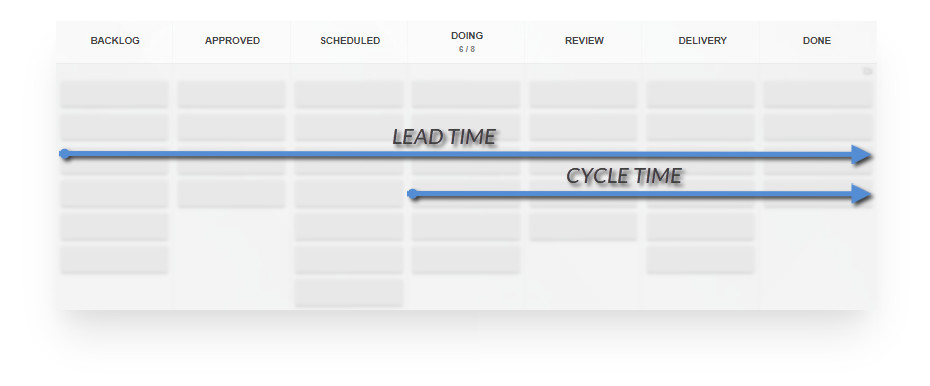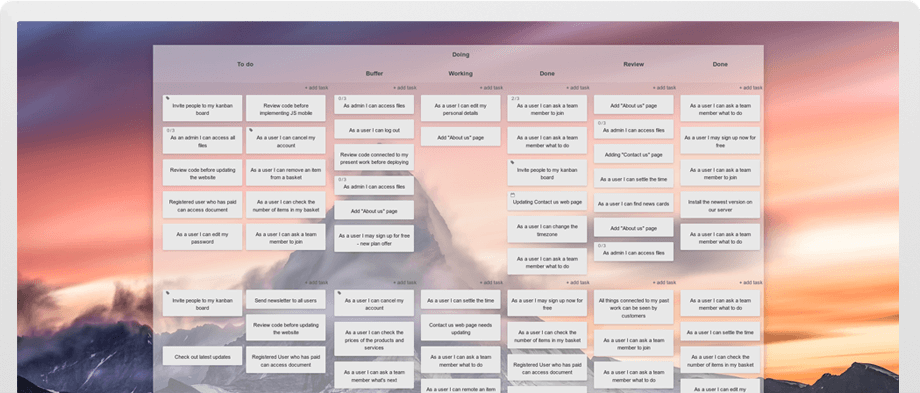Lead Time
The lead time starts being measured as soon as a request appears. Whether it's a request for a new product,
a feature - or whatever your business works on - the moment of a new request arriving is exactly when you can begin timing its lead time.
Cycle Time
What do you count as cycle time then? It doesn't often happen, that your employees are just sitting around with nothing to do (let's hope!). So, as a new order comes in, it will first spend some time waiting for its implementation turn. It may be days or weeks before someone is available to actually work on it. But once they do - the moment the work on this order starts, is the beginning of the cycle time, lasting until the work is completed.
Why is keeping the difference between these two as small as possible so vital to your business prosperity? When customers choose to do business with you, all that they are aware of is the lead time. They have no insight into your pending orders and ongoing work - what they base your response time on, is the time that passes between them making the request and your delivery (lead time) - as opposed to the time, that it actually takes you to process it (cycle time).
How can you improve on your lead and cycle time?
What you should find of help is a tool, that will automatically make these statistics accessible to you. Kanban Tool
- an online visual management software - does that exactly. While you're happily managing tasks and assigning them to team members, the software makes note of when a task has entered the Kanban board, allowing you to later compare it to the time, that someone was actually actively working on it - as was measured with built-in, seamless Time Tracking.
What other benefits are there?
With Kanban Tool, not only can you follow your Lead and Cycle times, and possibly greatly improve your performance by doing so, you will also be able to:
- make sure, that the whole team follows the information about each project, and is up-to-date,
- get unlimited access to your workflow - with Kanban Tool online service, the boards are available form everywhere and at any time,
- improve the team communication - thanks to Kanban card comments, checklists, attachments, assignments and more,
- ensure, that the work process stays flexible and is always easy to improve - with continuous feedback coming from the analytical section - you'll already be on your way to improve it greatly
- increase productivity - due to the fact, that the team is more focused (Kanban applies Work In Progress limits), and thanks to savings on communication time and slip-ups, your overall productivity has no choice, but to go up!


